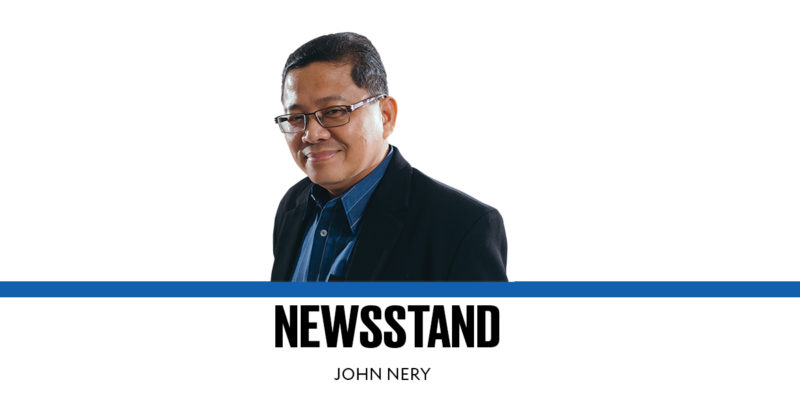It is not true that the second President Aquino never got his due. Before President Duterte reached new records in satisfaction or approval ratings, Noynoy Aquino was the most popular president since regular surveys began. In fact, and I would think very few of us would remember this, his high ratings remained high in the immediate aftermath of the “Yolanda” catastrophe.
In “Analysts before surveys: Aquino post-‘Yolanda’ edition” (1/7/2014), I gently criticized the Reuters news agency for basic innumeracy. A Reuters analysis that ran on Nov. 15, 2013, a week after Yolanda, pushed a narrative of “backlash” against the President for the initial handling of the disaster by basing it on a fundamental error. Reuters alleged that Aquino’s satisfaction ratings had plunged from 74 percent to 49 percent in September (crucially, several weeks BEFORE the supertyphoon made landfall). In fact, the first figure (from March 2013) was raw satisfaction (or number of satisfied), while the second figure was net satisfaction (that is, number of satisfied minus number of dissatisfied). The raw satisfaction rating for September 2013 was actually 68 percent—still down from 74, but not by as much. In other words, Reuters compared the raw apple with the net orange.
What explains this basic mistake? The analysis carried a sensational but unsupported headline: “Analysis: From hero to zero: Philippine president feels typhoon backlash.” Aside from the erroneous comparison between two surveys, the analysis included pessimistic comments from political commentators and this narrative-driven conclusion: “Political analysts say Aquino’s ratings will likely suffer in the next opinion polls, especially in the typhoon-swept central Philippine provinces that have been bastions of support.” (As I noted in my column, I shared that rapidly formed conventional wisdom, too.)
It was certainly conventional, but it wasn’t wise. In fact, it was the exact opposite; it was folly.
“From 68 percent in September, the President’s satisfaction rating [in December 2013] held statistically steady at 69 percent; his net satisfaction rating remained at plus 49 percent. In the Visayas, the hardest-hit disaster areas, his satisfaction rating rose from 68 to 70 percent … and his net satisfaction remained statistically steady, up from plus-48 to plus-50.”
I did not fully understand it then, but I can see now, from what the Reuters example shows, that Yolanda may have marked the point where the media narrative about the second Aquino presidency diverged from public opinion. A raw satisfaction rating of 69 percent in the immediate aftermath of the most powerful storm ever recorded is something to marvel at. And yet, while a still patient people continued to give President Aquino his due, the media had found a new narrative to push. From hero to zero, indeed.
It was only after the Mamapasano incident that public opinion caught up with the media narrative. In March 2015, Aquino received his lowest ratings: 47 percent raw satisfaction, 11 percent net. The high death toll and the internal politics of the raid finally snapped the people’s patience. Aquino’s decision not to receive the caskets of the (42 of 44) slain SAF officers flown back to Manila may well have been the pivotal moment. As I have argued in many columns, for instance in “What is Aquino accountable for?” (2/3/2015), his decision-making was partly at fault. And yet, even today, after his death, many in the mainstream media have continued to internalize the negative narrative about Aquino in the last half of his term. In the Philippine Star’s first story on his passing, for instance, the SAF raid was described as a “failed” operation—when in fact the main objective was met: the capture or death of the terrorist Marwan. The cost of success was steep, but as controversial and fault-ridden as it was, the raid succeeded.
When people say, then, that President Aquino did not get his due, my own reflection on my own practice and that of my profession leads me to two related conclusions: First, they mean, even without directly accusing the mainstream media, that the media narratives about Aquino during his presidency had failed to reflect the full scope and true scale of his achievements. And second, they mean that the new gatekeepers of reputation, even without directly referring to the architects and influencers and grassroots operators of what the scholars Jonathan Corpus Ong and Jason Cabañes call an “invisible machine” of networked disinformation, have built their own negative narratives about Aquino, and these have obscured the nature and character of his presidency.
* * *
Once, the Inquirer hosted a group of Asian journalists; it was my task to announce President Aquino’s arrival. Palace staff told me, repeatedly, that protocol required me to say “the President of the Philippines,” not the more familiar, more usual, “President of the Republic of the Philippines.” When Aquino arrived at the Inquirer’s multi-purpose hall, I dutifully announced: “Ladies and gentlemen, the President of the Philippines.”
But it was Press Secretary Sonny Coloma’s role to introduce Aquino before he read his speech, and when he did, he introduced him, simply, and to my everlasting amusement, in the exact way I was told not to: “Ladies and gentlemen, the President of the Republic of the Philippines!”
I remember this anecdote now, because the outpouring of praise for his character and his presidency, the belated settling and resolving of media accounts, reminded me that, while he was a reluctant president, he was also a good one. He deserves to be introduced, for all time, according to the phrasing we find in the Constitution he defended and consulted every single day: Ladies and gentlemen, the President of the Philippines.
On Twitter: @jnery_newsstand; email: jnery@inquirer.com.ph
